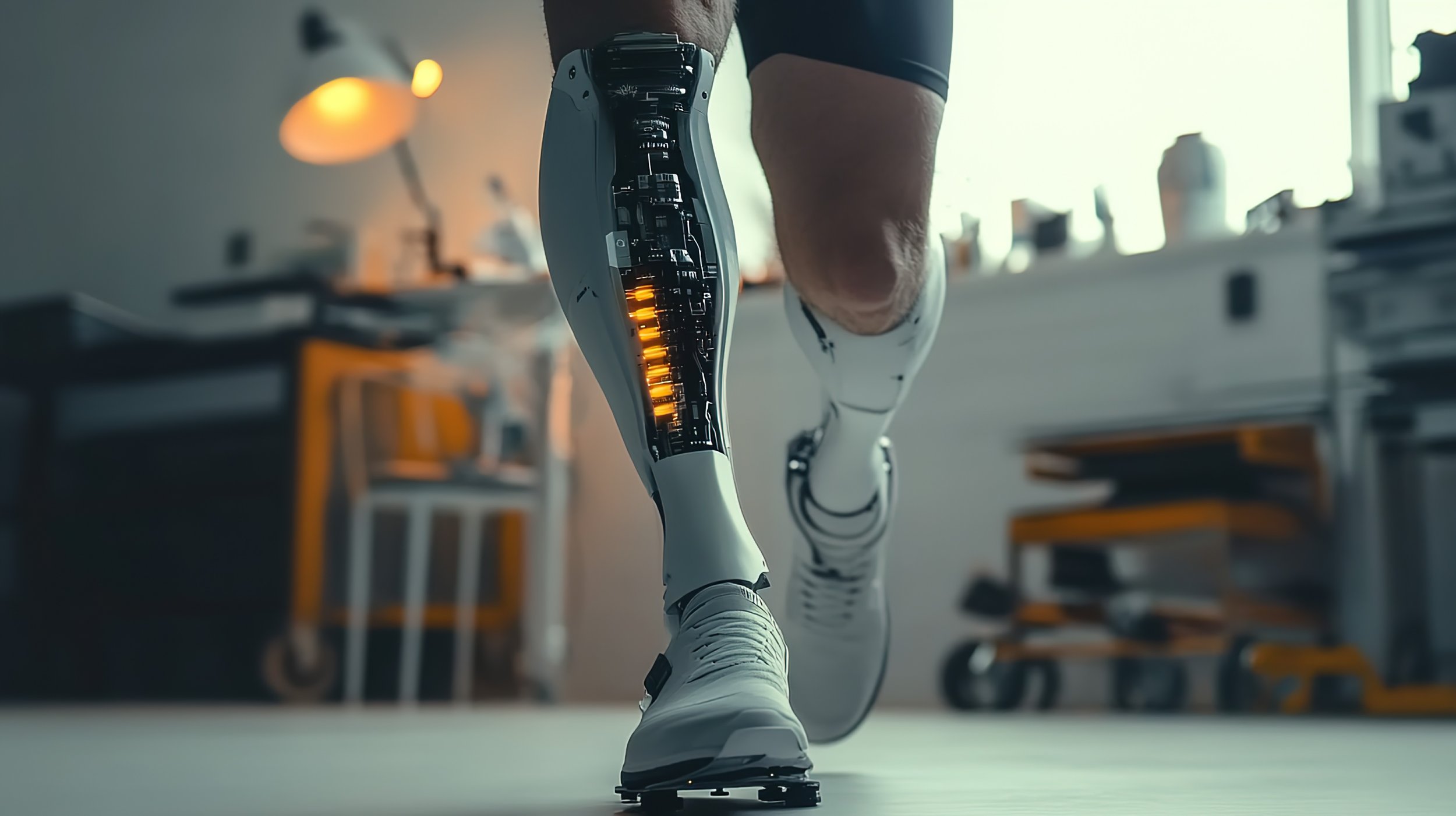Bionic Prosthetic Innovation
Introduction
For centuries, prosthetics have served as essential tools for individuals with limb loss, enabling them to regain mobility and perform daily activities. However, traditional prosthetics often lack the dexterity, control, and sensory feedback of natural limbs, limiting functionality and user experience. This is where bionic prosthetics emerge, offering a paradigm shift in the field.
Bionic prosthetics are a powerful fusion of robotics, advanced materials science, and biocompatible interfaces. These intelligent prosthetics are equipped with motors, sensors, and computer processors to mimic natural movement patterns and provide sensory feedback. They are crafted from lightweight, high-strength materials that prioritize both functionality and user comfort. Crucially, biocompatible interfaces ensure seamless integration with the human body, minimizing tissue damage and maximizing user acceptance.
The Power of Robotics: Replicating Natural Movement
Advanced robotics plays a pivotal role in bionic prosthetics:
● Sophisticated Actuators: Miniaturized motors and actuators enable bionic limbs to replicate the complex movements of natural joints, allowing for greater range of motion and improved control.
Sensor Integration: Sensors embedded in the prosthetic limb can detect signals from residual muscles or the nervous system, allowing for intuitive control by the user. For example, electromyography (EMG) sensors can detect muscle activity and translate it into movement commands for the prosthetic limb.
● Advanced Control Systems: Microprocessors within the prosthetic limb interpret sensor data and control actuator movements. These sophisticated control systems can even adapt to different situations, allowing for smooth and coordinated movements. Material Science: Building Strength and Functionality
Material science plays a critical role in bionic limb development:
● Lightweight and High-Strength Materials: Bionic limbs are constructed from advanced materials like titanium alloys, carbon fiber composites, and specialized polymers. These materials offer a balance of strength, flexibility, and weight, ensuring durability while minimizing user fatigue.
● Osseointegration: In osseointegration procedures, a titanium implant is surgically anchored to the bone. This implant allows for a more direct connection between the prosthetic limb and the skeleton, leading to improved stability and control.
● Smart Materials: Research is exploring the potential of smart materials that can adapt to environmental conditions or user needs. For example, shape-memory alloys may be used to create prosthetics that automatically adjust to temperature changes.
Biocompatibility: Seamless Human-Machine Integration
Biocompatibility is paramount for successful and long-term use of bionic prosthetics:
● Biocompatible Materials: Materials used in bionic limbs must be compatible with the human body to minimize the risk of infection or tissue rejection.
● Tissue Interfaces: The interface between the prosthetic and the body needs to be designed to minimize tissue damage and promote healthy tissue integration.
● Reduced Nerve Pain and Phantom Limb Sensation: Advanced biocompatible interfaces can help reduce phantom limb sensation and nerve pain, common challenges faced by individuals with limb loss.
The Impact of Bionic Prosthetics
Bionic prosthetics are not just technological marvels; they offer transformative benefits for individuals with limb loss:
Improved Mobility and Independence: Bionic limbs allow users to perform daily activities and regain their independence, fostering an improved quality of life.
● Enhanced Dexterity and Control: Advanced prosthetics offer greater dexterity and control, enabling users to grasp objects, manipulate tools, and participate in activities that may have been previously impossible.
● Sensory Feedback: Some bionic limbs provide sensory feedback, allowing users to perceive sensations like pressure and temperature, further enhancing prosthetic control and user experience.
● Psychological Well-being: Regaining function and control through bionic prosthetics can significantly improve self-esteem, confidence, and overall well-being for individuals with limb loss.
Challenges and Considerations
Despite the remarkable advancements, bionic prosthetics still face some challenges:
● Cost and Accessibility: Bionic prosthetics can be expensive, limiting accessibility for some individuals. Insurance coverage and government initiatives are crucial for making these advanced technologies more widely available.
● Control Complexity: Although user interfaces are improving, controlling complex bionic limbs can require significant training and practice. Simplifying user interfaces and offering personalized training programs can address this challenge.
● Battery Life: The battery life of bionic limbs can be a limitation, requiring frequent charging. Advancements in battery technology and energy-efficient design are essential for extended use.
● Ethical Considerations: As bionic limbs become more sophisticated, blurring the lines between human and machine, ethical considerations regarding human augmentation need careful discussion.
● Long-Term Durability and Maintenance: Bionic limbs are complex devices that require ongoing maintenance and repairs. Ensuring long-term durability and minimizing repair costs will be essential for user adoption.
The Future of Bionic Prosthetics
The future of bionic prosthetics holds immense promise:
● Brain-Computer Interfaces (BCIs): Direct integration of bionic limbs with the brain through BCIs could revolutionize control and functionality. Users may be able to control their prosthetics with their thoughts, achieving a more natural and intuitive experience.
Artificial Intelligence (AI): AI integration can lead to intelligent prosthetics that learn and adapt to user needs. The prosthetic could continuously adjust settings or movement patterns to optimize functionality for different situations.
● Biomimetic Design: Biomimetic design principles inspired by nature can lead to the development of even more sophisticated and intuitive prosthetics that mimic the complex biomechanics of the human body.
● Improved Cosmetic Design: Bionic prosthetics are becoming more aesthetically pleasing, allowing for greater user acceptance and a more natural appearance.
● Integration with Telehealth and Remote Monitoring: Remote monitoring capabilities can allow for adjustments and troubleshooting of bionic limbs remotely, improving user convenience and access to support.
Conclusion
Bionic prosthetics represent a remarkable convergence of robotics, material science, and bioengineering. These intelligent prosthetics are not only restoring function and independence for individuals with limb loss but also redefining human potential. As researchers continue to overcome challenges and refine these technologies, the future promises bionic limbs that seamlessly integrate with the human body, offering unparalleled functionality and a truly lifechanging experience for users.
References
● Bionic Prosthetic Arms: https://spectrum.ieee.org/bionic-hand-design ● Bionic Prosthetic Legs: https://www.ossur.com/en-nz/professionals/bionic-legs
● National Institutes of Health (NIH). (2021, December 10). Bionic limbs. https://www.ncbi.nlm.nih.gov/pmc/articles/PMC7047902/
● Osseointegration for Amputees: https://www.thesteadmanclinic.com/
● The Amputee Coalition. (2023, April 12). Bionic Legs. https://www.amputeecoalition.org/

